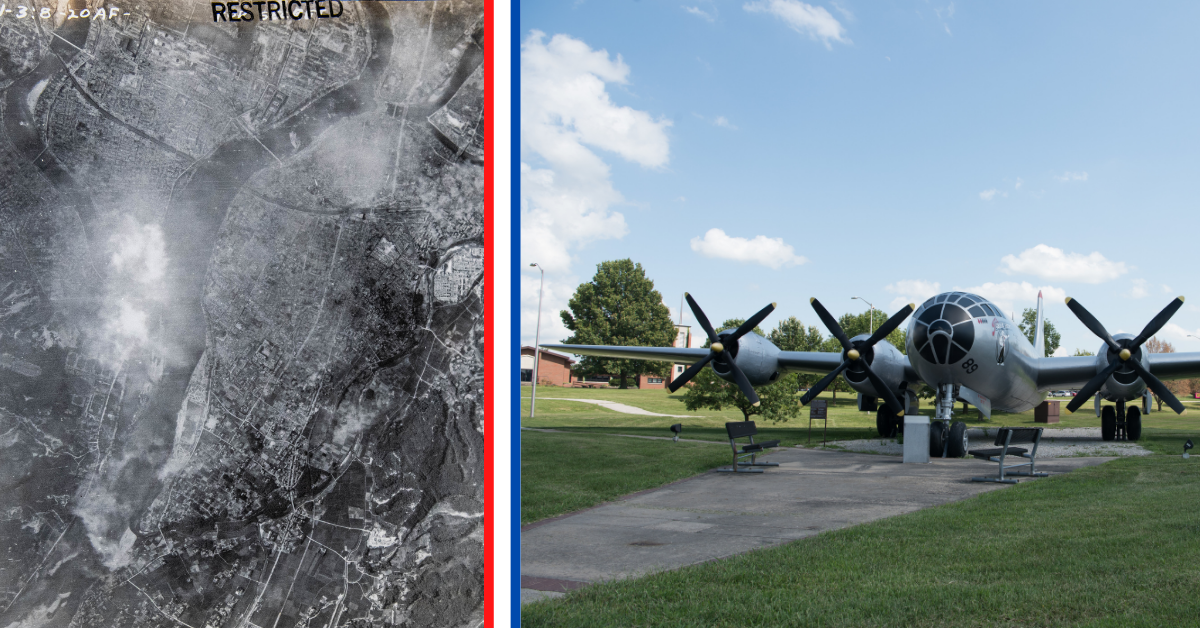This is how much mass is destroyed in a nuclear explosion

U.S. Air Force photo by Airman 1st Class Parker J. McCauley.
SUMMARY
Every bit of matter in the universe holds a ton of energy. Einstein's equation, E=MC^2, posits that mass and energy are the same thing but in different forms. And a tiny amount of mass represents a massive amount of energy. So much energy that the atomic weapons used against Japan and the nuclear weapons stockpiled around the world only have to convert a tiny amount of matter into energy to have devastating effects. How tiny? A butterfly's worth.
The Hiroshima bomb
The first atomic weapon launched in anger was the one dropped by the Enola Gay on Hiroshima, Japan on August 6, 1945. The bomb was massive, weighing approximately 9,700 pounds in an age when most bombs weighed less than 4,000. But Little Boy, as the bomb was called, used an inefficient "gun-type" design.
A very small amount of matter actually turned into energy. The weapon contained 141 pounds of uranium, about two pounds of it fissioned, and that converted about a gram of it into energy. That little uranium created a 15-kiloton explosion that killed nine out of 10 people within a half mile of the bomb, instantly ignited hundreds or thousands of fires that created a massive firestorm, and flattened buildings and broke windows.
The Nagasaki bomb
Just a few days later, on August 9, America dropped a second atomic bomb on Japan. The "Fat Man" bomb dropped by Bock's Car created a 21 kiloton explosion, 40% larger than the Hiroshima blast. It affected 43 square miles with blast, heat, and radiation, flattening even some earthquake-hardened structures and 14,000 homes.
The pit in the Fat Man bomb was much smaller, at 13.6 pounds, but made of plutonium which is more efficient. About 2.2 pounds of plutonium fissioned. That's the weight of a bocce ball. And even less matter was converted than underwent fission.
Bikini Atoll
The Castle Bravo shot at Bikini Atoll in 1954 is the largest thermonuclear explosion ever conducted by the United States. The huge explosion was, in part, a mistake. It was the first test of a "dry" thermonuclear device, and designers drastically underestimated how much lithium would increase the efficiency of the weapon.
About a quarter of the weapon's 880 pounds of lithium-6 deuteride underwent fission or fusion. This resulted in a 15-megaton explosion 1,000 times stronger than the explosion at Hiroshima. It also created the largest nuclear contamination incident in U.S. history, exposing hundreds of Pacific islanders and U.S. service members to high levels of radiation.
The Tsar Bomba
The Soviet RDS-220, known in the U.S. as the Tsar Bomba, was the largest nuclear device ever detonated. On October 30, 1961, the Soviets detonated a version with a 50-megaton result. This damaged buildings over 100 miles away and a test witness 170 miles away reported feeling the thermal blast. It created a seismic event that completed three revolutions around the Earth. Insanely, this was the muted version of the Tsar Bomba, with a lead tamper instead of a uranium one. The uranium version is thought to have a 100-megaton yield.
According to an East Tennessee State University lesson supplement, the energy released by Tsar Bomba represented about 5 pounds of matter converting to energy. Those five pounds created a mushroom cloud that rose over 40 miles into the air, seven times higher than Mount Everest.
The continent cracker
Scientists at Livermore Laboratory once proposed an insane double-thermonuclear weapon. Gnomon would create a 1,000-megaton explosion and trigger Sundial which boasted a 10,000-megaton yield, if the scientists' predictions were right.
It's important to note two things: 1) The assembled scientists from other labs immediately laughed it down, and 2) These were the folks whose last three designs had failed.
But if their designs had worked, it would require an approximately 25-ton design, blow a hole in the atmosphere, and instantly burn an area about the size of France. But it would only need to convert about 100 pounds of matter into energy in the first stage and 1,000 pounds in the second stage to achieve the result.
SHARE
